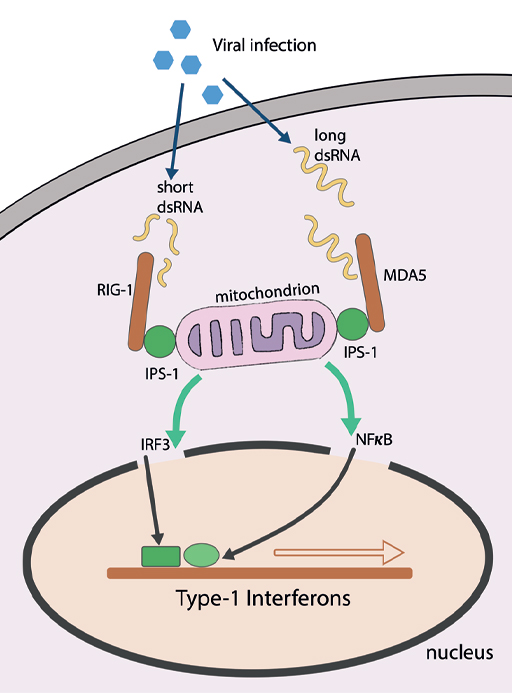3.3 Cytosolic receptors for viral infection
After a virus has escaped from the endosome of an infected cell, virus components are located in the cytoplasm. Receptors are also present in the cytoplasm, that recognise and limit viral replication and spread. They belong to a family of receptors called the ‘Retinoic acid-inducible gene I (RIG1)-like helicases’ which are understandably abbreviated to RLHs. Two receptors are particularly important in this context:
- RIG-1 itself which recognises short dsRNA
- MDA5 which recognises long dsRNA
-
Why would recognition of cytoplasmic dsRNA, enable a cell to identify an ongoing viral infection?
-
dsRNA is an intermediate produced during replication of RNA genome viruses, which is not a regular component of host cells.
After binding to dsRNA these receptors localise to mitochondria via an adapter protein IPS-1. They then activate transcription factors NFκB and IRF3 (Interferon regulatory protein-3) which translocate to the nucleus of the cell and activate transcription of a number of genes including the genes for type-1 interferon, as shown in Figure 11. You can also see that RIG-1 and MDA5 are cytoplasmic receptors for dsRNA. They lead to activation of transcription factors IRF3 and NFκB, which promote transcription of genes for type 1 interferons, and other cytokines

